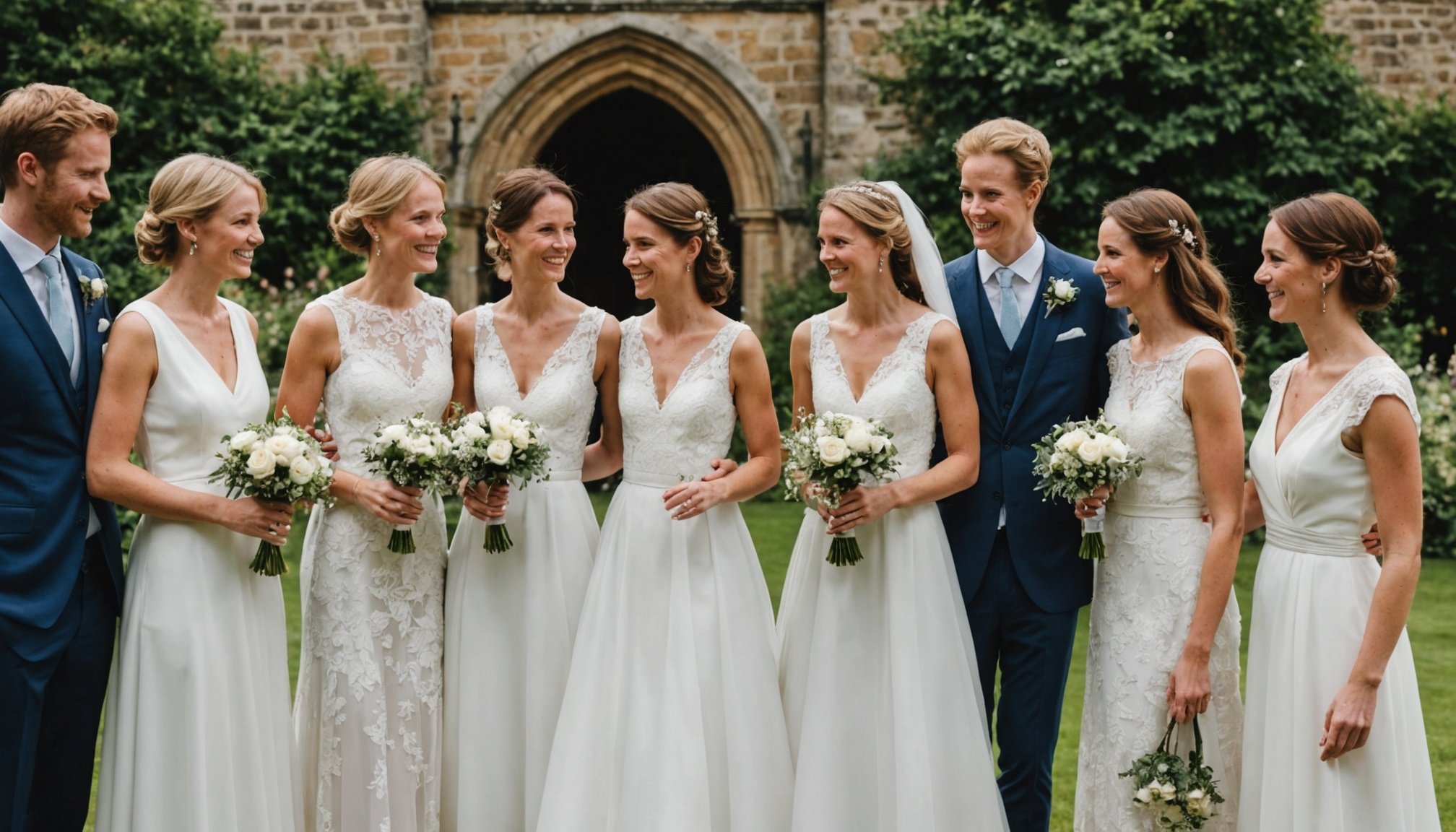Overview of Wearing White at Weddings in the UK
In the UK, white wedding attire holds a significant cultural resonance, tracing back to the marriage of Queen Victoria in 1840. Before Victoria’s wedding, brides favoured dresses in various hues, symbolising wealth and status. Yet, her choice of a white gown sparked a revolution, marking a shift towards purity and innocence.
Presently, UK weddings embrace more diverse sartorial choices while respecting this historical legacy. Brides are increasingly opting for pastel shades, reflecting a broader societal embrace of personal expression. This isn’t just about fashion trends—it’s a testament to evolving cultural perspectives.
This might interest you : Discover Tailoring Services for Disabled Women Across the UK: A Guide to Specialized Fashion
Understanding local traditions is vital for anyone planning or attending a wedding in the UK. While white maintains its time-honoured status, some families may hold specific preferences or customs worth considering. Observing these nuances can enrich the wedding experience, ensuring that guests and the couple are in harmony with tradition.
Ultimately, wearing white remains a highlight for many UK weddings, yet its significance has expanded beyond tradition into a canvas for personal style and cultural evolution.
Additional reading : Discover the Ultimate Guide to Trendy Maternity Fashion in the UK: Your Go-To Spots for Stylish Styles!
Traditional Etiquette for Brides Wearing White
The white wedding dress has deep-rooted significance as it symbolises purity and new beginnings. This tradition gained popularity after Queen Victoria wore a white gown in 1840 and continues to be a predominant choice for brides. Understanding bridal etiquette can aid those who wish to align with this timeless custom.
When considering wedding norms, brides opting for white should be aware of certain guidelines. Firstly, the dress should align with the overall theme of the wedding and complement the venue. Whether a formal ballroom setting or a casual beach gathering, the attire should feel cohesive with the environment.
Brides should also ponder their personal style against tradition. For those whose preferences lean towards contemporary styles, integrating modern elements such as unique silhouettes or subtle embellishments can be a way to honour tradition while expressing individuality. While the colour remains paramount, variation in fabric, design, and accessories allows personalisation.
Ultimately, the decision to embrace traditional white attire should resonate with the bride’s vision for her day. Balancing traditional etiquette and personal style can result in a wedding look that feels both authentic and respectful of enduring customs.
Guest Attire: Rules for Wearing White
Choosing the right wedding guest attire involves understanding a balance between tradition and personal style. Etiquette dictates specific rules and expectations, especially regarding the color white.
Understanding the Unwritten Rules
Traditionally, wearing white as a guest is discouraged. White is reserved for the bride, ensuring she stands out on her special day. However, when navigating etiquette for guests, there are situations where it might be permissible, such as themed weddings where white is part of the dress code or all-white attire is requested by the couple.
Examples of Appropriate Guest Outfits
Opt for colors like pastels, jewel tones, or navy blue when selecting appropriate colors for wedding guest attire. These hues offer sophistication without overshadowing the bride. Accessories play a crucial role, enabling guests to personalize their look subtly.
Cultural Nuances in UK Weddings
In the UK, cultural diversity influences wedding attire significantly. While traditional expectations remain, modern weddings introduce flexibility in dress codes. Some cultures incorporate white differently, allowing it based on cultural symbolism. Additionally, regional differences in the UK may affect the acceptability of white, demanding sensitivity to local customs.
Modern Perspectives on Wearing White
With contemporary weddings evolving, fashion trends significantly influence wedding attire choices. Many brides are now opting for gowns that reflect their personal style, moving away from traditional white dresses. This shift aligns with broader fashion trends, where individuality and self-expression are celebrated.
The rise of non-traditional wedding dresses offers an array of choices beyond the classic white. Designs vary from bold colours to intricate patterns, catering to diverse tastes. These options allow brides to feel more authentic and comfortable on their special day, embracing styles that resonate personally.
In wedding culture today, there’s a keen emphasis on individuality. Guests, too, feel encouraged to wear outfits that reflect the occasion’s theme or their personal taste, breaking away from rigid dress codes. This trend promotes a more inclusive and unique celebration where everyone expresses themselves freely.
Overall, modern weddings present an opportunity for both brides and guests to embody their authenticity. Whether through adopting current fashion trends or daring to be different with non-traditional choices, today’s wedding attire is all about personal expression and comfort.
Frequently Asked Questions About Wearing White
Understanding the etiquette questions surrounding wedding attire can ease decision-making. Here’s a look at some common queries addressed by frequently asked questions about what to wear to a wedding.
Common Misconceptions
Some guests believe that wearing white is acceptable if it’s paired with other colours. However, tradition typically reserves this hue solely for the bride. Different cultural weddings might introduce unique attire guidelines, such as allowing white if it holds a specific symbolic meaning.
There are also scenarios where etiquette myths prevail, such as the notion that wearing white is acceptable at non-traditional weddings. These are commonly debated, with advice leaning towards consulting the couple first.
Advice for Managing Attire Conflicts
To avoid attire controversies, open communication is vital. Brides can proactively share attire preferences with guests. Guests, on the other hand, may ask direct wedding FAQs to better align with the couple’s expectations. Misunderstandings can often be alleviated with early discussions, ensuring everyone’s comfort.
Resources for Further Guidance
For in-depth answers, consider resources like etiquette guides or advice from wedding planners. They offer tailored insights into attire guidelines, including how to handle unique scenarios or cultural nuances. Accessing these resources can considerably ease attire planning.











